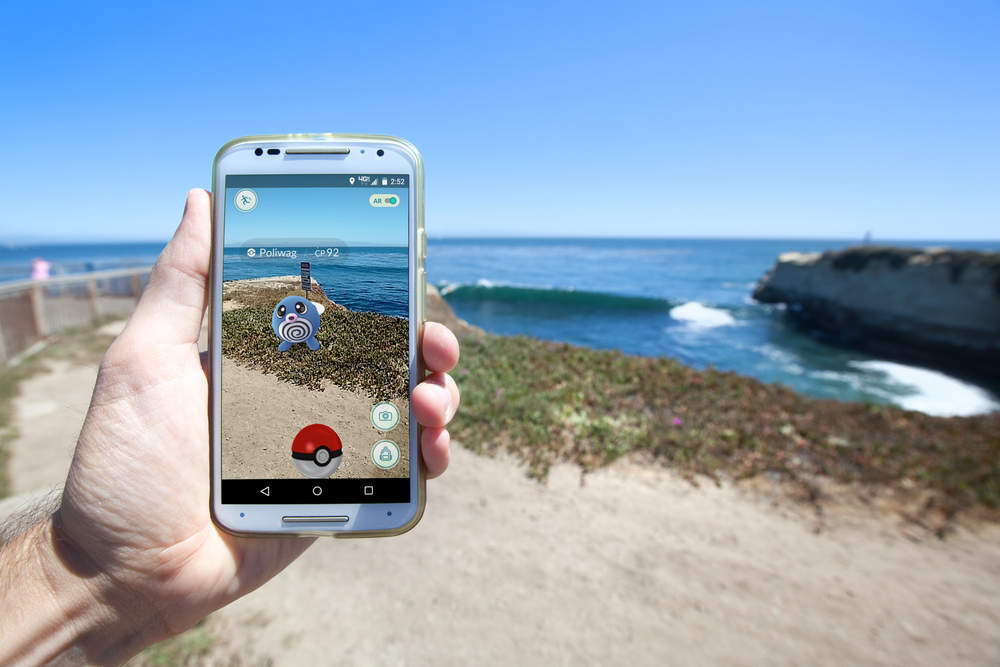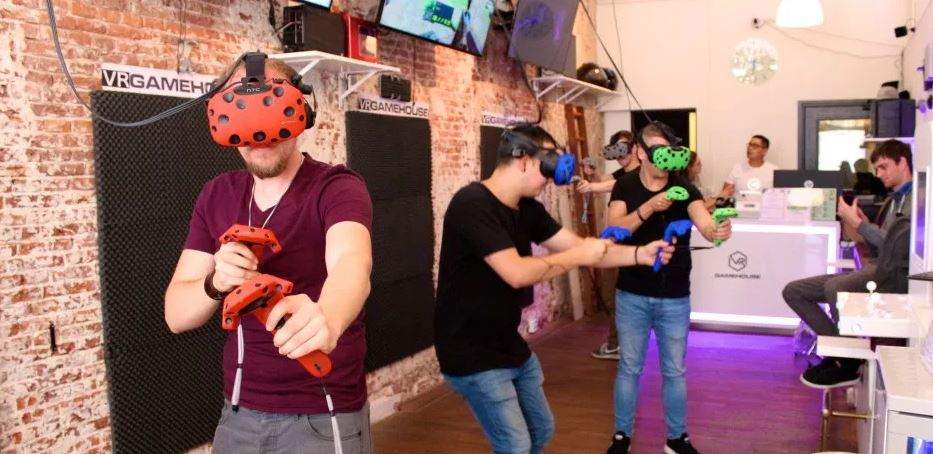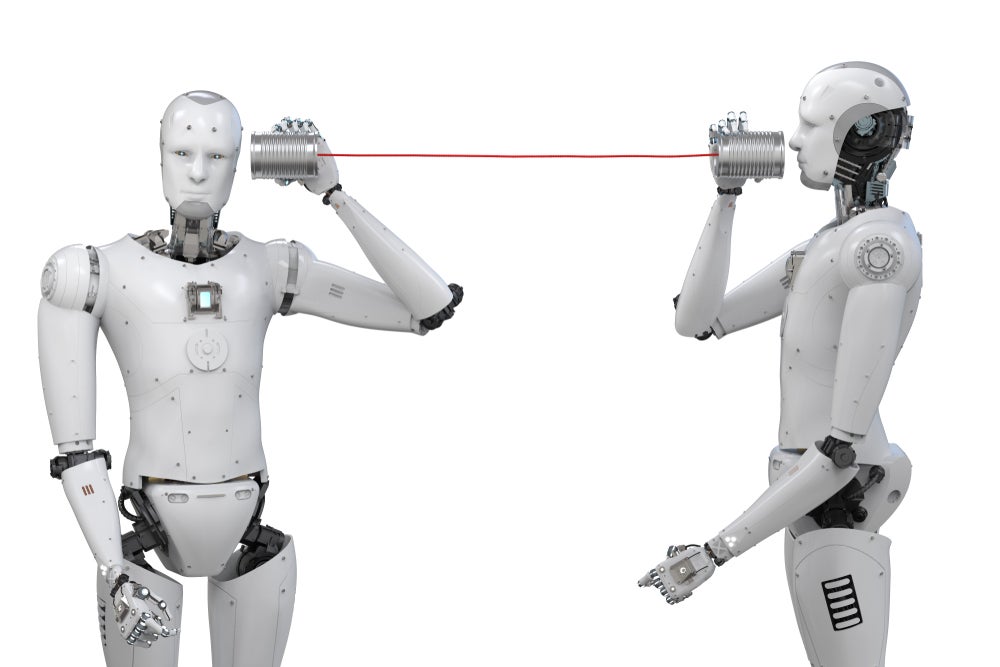
What is augmented reality? These days it seems no one can talk about any new technology without mentioning augmented reality or ‘AR’. But what actually is augmented reality and how is it being used?
Simply put, augmented reality is using digital elements to add to real life. For example, popular social media app Snapchat uses augmented reality to apply filters over users faces when they take pictures. The finished photograph is a composite of the real image with digital elements superimposed onto it.
These digital elements can either add-to real life or mask real life. People describe these uses as ‘constructive’ and ‘destructive’ respectively.
Augmented reality shouldn’t be confused with virtual reality (VR), another major technology trend. Virtual reality doesn’t superimpose digital elements onto the natural environment. Rather, virtual reality totally replaces the natural environment.
If a user was playing a virtual reality game through a headset they’d have total immersion in a different place, entirely digitally-generated. In an augmented reality game, they’d still see the real world with additional digital features superimposed on top of it.

There are dozens of permutations of VR and AR calling themselves ‘immersive reality’, ‘alternative reality’ or ‘cyberspace’, but ultimately all are either one or the other.
How well do you really know your competitors?
Access the most comprehensive Company Profiles on the market, powered by GlobalData. Save hours of research. Gain competitive edge.

Thank you!
Your download email will arrive shortly
Not ready to buy yet? Download a free sample
We are confident about the unique quality of our Company Profiles. However, we want you to make the most beneficial decision for your business, so we offer a free sample that you can download by submitting the below form
By GlobalDataWhat is augmented reality used for?
Thus far, augmented reality’s use is quite basic. The technology has become synonymous with mobile apps such as the aforementioned Snapchat. Paired with facial recognition technology, AR can add filters and distort the appearances of people’s faces.
Apps such as Snapchat and Instagram use this technology to great effect. Apple took things a step further using destructive AR technology to turn users’ faces into animated emojis.
The technology has also become popular in gaming. In that sphere, AR’s most noteworthy use is in hit mobile game Pokémon Go. This game overlays Pokémon characters onto the real world through the smartphone’s camera. Players must capture them by flicking virtual objects at them.
However, while AR has mostly been a novelty, its implications are becoming more obvious.
Art and museums:
Around the world, many galleries and artists are beginning to see the value of AR for the world of art.
In late 2017, Art x Snapchat was launched in collaboration with artist Jeff Koons. Users can visit certain real-life locations, fire up Snapchat on their smartphones, and see huge artworks in that location through the app. So far, these art pieces only appear in major cities around the world. Still it’s easy to see how this kind of technology could lead to huge entirely virtual outdoor galleries.
Elsewhere, brick-and-mortar galleries such as The Cleveland Museum of Art, London Science Museum, and New York’s Metropolitan Museum of Art have also started using AR technologies in their exhibitions. These include games and virtual guides, which encourage viewers to take a more active interest in the art they’re observing.
Emergency services:
Having opened a new Innovation Centre in London recently, Motorola Solutions proudly told Verdict that it is looking into using AR technology to assist emergency services.
One example provided by chief strategy and innovation officer Eduardo Conrado was in a firefighting setting:
“In the US if there’s a multi-alarm fire happening, you have a lot of units on the scene. And the commander is sitting with a whiteboard, where he’s tracking firefighters and units. What we envision is: you overlay the AR digital components with a map of the building [onto the fire scenario] and you can track everybody that’s coming into the scene, and their oxygen levels.”
The idea is that services could use AR technologies to feed information back to a team at base. That team could provide real time assistance and feedback directly to the person at the scene.
Retail:
One of the key industries hoping to capitalise on AR is retail.
It’s easy to see how this technology could find success in retail. The service could offer consumers a ‘try before you buy’ situation at no cost of time or resources for the business itself.
For example, imagine buying a new piece of furniture. An augmented reality app could allow users to project the furniture into their space to get a feel for how it might look in real life. That might help users consider whether or not the item would fit in their room, both in terms of size and decor.
The same applies to fashion. For example, seeing how clothes might look on a consumer’s body or how make-up could look on their face.
The obvious benefit to the business is that consumers with more confidence in the product are more likely to make a purchase. In addition, businesses might find they would use less time and resources in organising returned items. That’s especially the case for online brands which don’t have a fitting room or showroom.
A few retailers such as Ikea are already jumping aboard the AR bandwagon.
The future of augmented reality
The future is bright for AR. No doubt we’ll see a lot more adoption of the technology in the near future. The real challenge for AR will be to break out from behind smartphones.
However, with devices like the Google Glass in development there’s every chance that could happen.
Google Glass is a pair of spectacles which allow users to see AR elements in front of their eyes without looking through a phone. If successful, devices like this could make AR a more seamless experience.
Another interesting use of the technology is in ‘smart mirrors’. These mirrors will allow users to see themselves wearing new clothes without having to actually try to the products on.
Safe to say, AR is a hot talking point for tech enthusiasts at the moment. However, it won’t be long before the average person starts seeing the technology in their own lives too.







